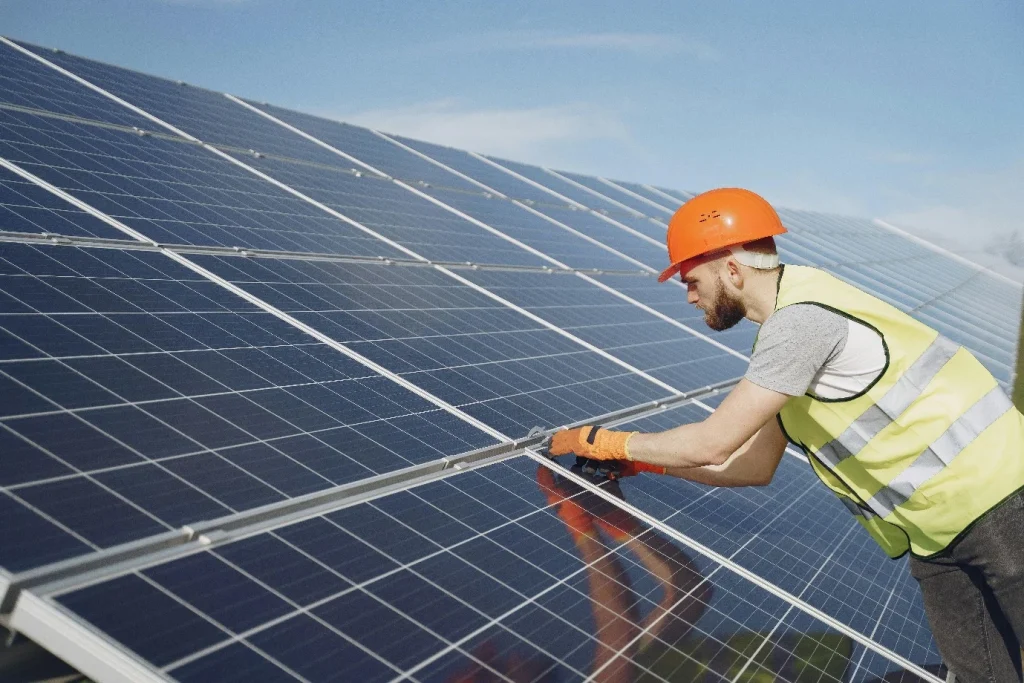One of the largest contributors to waste generation, resource consumption and carbon emissions has been the construction industry. Some studies suggest that the buildings and construction or sustainable construction sector accounts for a staggering 37% of global emissions, with a similar scale of waste production.
As a result of climate change, stakeholder demand and regulatory pressure, sustainability has emerged as an important driver for change in the construction, which is now having to rethink business models, processes and materials used. In this article, we look at some of the top technologies driving the change towards sustainable construction. Read on to find out what they are.
Explore a related post crafted to align with your interests and broaden ideas.
Digital technologies improving lead generation and operations
When it comes to the construction industry, one of the first things that comes to mind is the on-site machinery. But digitalisation and its positive impact on sustainability goes beyond what’s onsite and is actually reshaping how businesses manage their workflows, win projects and collaborate. Digitalisation is also supporting businesses development, with digital platforms and data-driven marketing helping firms identify and secure construction leads more effectively.
Tools like cloud-based project management, BIM-enabled collaboration platforms and also digital twin technologies are giving businesses the ability to share data in real time, monitor material usage and catch errors earlier than ever before.
Sustainability has now become a priority for many clients, and companies that can show their sustainable credentials and digital competence can have a competitive edge over others. Digitised workflows also help reduce resource waste and improve cost and energy outcomes.
The rise of sustainable materials
Another way that the construction industry seeks new ways to become more sustainable is the materials that they use. Innovations in ‘green’ building materials like recycled lumber, steel with recycled, biodegradable insulation (such as mycelium-based products) and engineered timber are becoming increasingly widespread.
Graphene is also becoming an emerging material with the potential to transform concrete, as it offers high strength with lower material volumes (meaning reduced emissions). Other examples include modular off-site manufacturing or factory-prefabricated components which offer sustainability benefits as they reduce on-site waste and transport while also improving quality control.
Artificial intelligence and sustainable project delivery
Artificial intelligence (AI) is driving transformation across industries quicker than ever before, including providing more information and enabling sustainable outcomes in construction. From IoT sensors to BIM models and energy use, the sector generates large volumes of heterogeneous data. Today, AI and ML techniques are being applied to help make sense of it all, and are being used for design optimisation, simulation and predictive maintenance.
In the design phase, AI-powered generative design tools can help simulate endless configurations, optimise for energy use, material efficiency and occupant comfort. As a result of this, teams can choose the most sustainable design option much earlier on in the process than before and therefore reducing any inefficiencies and waste in the process.
AI-augmented systems like digital twins fed by IoT sensors can enable real-time monitoring of energy consumption, resource usage, equipment performance and indoor environment quality. In doing so, these data feed predictive models that can anticipate things like system failures while reducing downtime and extending asset life. Finally, AI can improve supply-chain decisions and procurement, helping choose low-carbon materials, optimise logistic flows, track usage and reduce waste.
The future potential within the construction industry is exciting. With there being a shift towards more sustainable processes and standards, that are being driven by a combination of digital technologies, intelligent systems and advanced materials.
For businesses in this sector, embracing IoT, AI, BIM, modular prefab and low-carbon materials is less of an option as it is a strategic move, which can give companies a competitive advantage in a saturated marketplace. It will be interesting to see what the future holds for the construction industry and the new innovations that will make the sector more sustainable, as we work together for a better future for us all.
Discover more content built to fuel curiosity and strengthen informed decisions.







